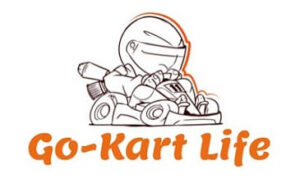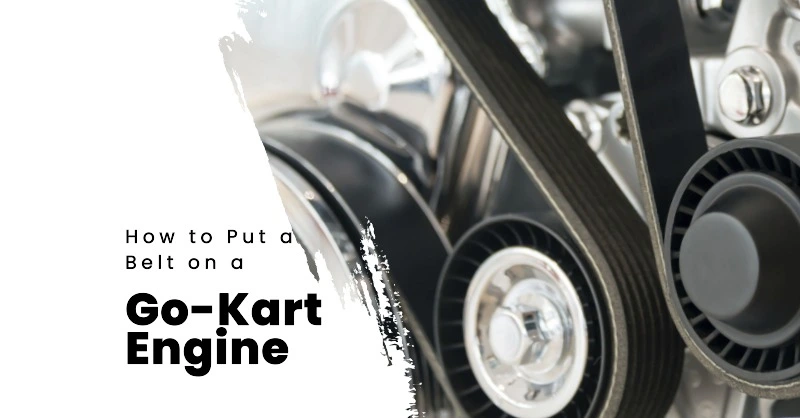This article is perfect if you’re new to the thrilling world of go-karts or need a refresher on maintaining your kart. We’ll walk you through installing a belt on your go-kart, ensuring it runs smoothly and efficiently. We’ve covered everything from identifying the right belt to the installation process. Let’s dive in!
| Key Takeaways |
|---|
| Identify the right belt for your go-kart by consulting the owner's manual and considering the type of clutch or torque converter your kart uses. |
| Step-by-step belt installation process includes removing the old belt, inspecting the clutch and pulleys, installing the new belt, adjusting belt tension, reassembling, and testing. |
| Change your go-kart belt every 50 hours of use or every season, whichever comes first, and inspect it regularly for wear and damage. |
| Signs that your belt needs replacing include fraying, cracking, slipping, excessive wear, or a decrease in performance. |
| Most individuals can install a belt on a go-kart with proper tools and guidance, but professional assistance may be helpful if unsure or inexperienced. |
| To maintain your go-kart belt, inspect it regularly, keep pulleys and components clean and well-lubricated, use a belt designed for go-karts, and follow manufacturer guidelines for proper installation and tension. |
Identifying the Right Belt
Before installing a new belt, choose the correct one for your go-kart. Most go-karts utilize either a centrifugal clutch or a torque converter. That makes it essential to pick a belt that matches your specific setup. Consult your go-kart’s owner’s manual for specific belt requirements and measurements.
Gathering the Necessary Tools and Equipment
Gather the necessary tools and safety equipment for a smooth belt installation process. You’ll need the following:
- Gloves
- Safety glasses
- Socket wrench set
- Screwdrivers
- Your go-kart’s owner’s manual
Next, ensure a well-lit, clean workspace; a clean environment is crucial for maintaining your go-kart.
Step-by-Step Belt Installation
1. Remove the Old Belt
Before installing the new belt, you’ll need to remove the old one. First, turn off your go-kart’s engine and ensure it’s cool. Then, disconnect the spark plug wire to prevent any accidental starts.
Depending on your go-kart’s design, you may need to remove other components, such as the chain guard or engine, to access the belt. Consult your owner’s manual for specific instructions.
2. Inspect the Clutch and Pulleys
Inspect the clutch, pulleys, and other components for wear or damage with the old belt removed. If any parts need replacing, consult our guide on go-kart repair shops to find a reputable repair service near you.
3. Install the New Belt
To install the new belt, loop it around the drive and driven pulley. Ensure that the belt sits snugly in the grooves of both pulleys. If you have a torque converter, align the belt with the driver and driven pulleys’ notches.
4. Adjust Belt Tension
Proper belt tension is crucial for optimal performance. Consult your go-kart’s owner’s manual for the recommended belt tension and adjust accordingly. If your kart uses a torque converter, consult our guide on adjusting a go-kart’s carburetor for optimal performance.
5. Reassemble and Test
After installing and adjusting the belt, reassemble any components you removed earlier. Reconnect the spark plug wire, and start the engine. Test the go-kart for smooth operation, and make any necessary adjustments. You may want to brush up on driving a go-kart before hitting the track again.
Related Article: How to Fix Go-Kart Engine-Knocking Problems
Conclusion
Changing the belt on your go-kart is a crucial aspect of go-kart maintenance, ensuring that your kart runs smoothly and efficiently. Following the step-by-step guide in this article, even first-time installers can confidently install a new belt and enjoy their go-kart’s optimal performance. Always follow safety guidelines and consult your owner’s manual for specific instructions related to your go-kart model.
Frequently Asked Questions
The frequency of belt replacement depends on usage and belt condition. Inspect your belt regularly for wear and damage, and replace it when necessary. As a general guideline, replacing the belt every 50 hours of use or every season, whichever comes first, is a good idea.
No, using a belt designed explicitly for go-karts would be best. Automotive belts are not designed to handle the unique requirements of go-kart torque converters or clutches and may result in poor performance or damage to your go-kart.
Signs that your go-kart belt needs replacing include fraying, cracking, slipping, or excessive wear. Additionally, if your go-kart experiences a significant decrease in performance or struggles to maintain speed, it may be time to replace the belt.
Installing a belt on a go-kart is a relatively straightforward process, and most individuals can complete the task with the proper tools and guidance. However, if you’re unsure or inexperienced, you may want to consult a professional or seek assistance from an experienced go-kart mechanic.
To prolong the life of your go-kart belt, inspect it regularly for wear and damage, and replace it as necessary. Additionally, keep your go-kart’s pulleys and other components clean and well-lubricated. Finally, always use a belt designed explicitly for go-karts and follow the manufacturer’s guidelines for proper installation and tension.

Goran, an experienced go-kart racer, fuels GoKartLife.com with his passion and expertise. He offers valuable insights and tips for fellow enthusiasts, fostering the growth of the go-kart community. Join Goran at GoKartLife.com and immerse yourself in this exhilarating sport.

